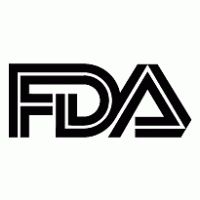Article
FDA Expands Lanadelumab for Preventing HAE Attacks in Younger Children
The sBLA for lanadelumab permits its use as a prophylaxis in children as young as 2 years old with the rare condition.

The US Food and Drug Administration (FDA) has expanded the use of lanadelumab (TAKHZYRO) for the prevention of hereditary angioedema (HAE) attacks in pediatric patients aged 2 to <12 years old.1
The approval of Takeda’s supplemental Biologics License Application (sBLA) makes the monoclonal antibody injection the first prophylaxis treatment available for younger children with HAE, a rare condition that causes serious and debilitating swelling the abdomen, face, feet, genitals, hands and throat.
Lanadelumab was originally approved by the FDA in for the prevention of HAE attacks in adult and pediatric patients ≥12 years old in 2018.2 This latest indication was supported by extrapolated efficacy data from the phase 3 HELP Study assessing the agent in pediatric and adolescent patients, as well as pharmacokinetic data and pharmacodynamic findings from the open-label phase 3 SPRING Study observing lanadelumab in 21 patients with HAE aged 2 to <12 years old.
In the primary safety outcome of the SPRING Study, investigators observed common treatment-related adverse events including injection site pain (29%), injection site erythema (14%), injection site swelling (5%), administration site pain (5%), and injection site reaction (5%).3
They additionally observed a mean 94.8% reduction in HAE attacks among treated patients compared to baseline—reducing mean monthly attacks from 1.84 to 0.08 per patient through 52 weeks. Another three-fourths (76.2%) of patients were attack-free through 52 weeks. However, Takeda emphasized these findings are pending confirmatory studies due to the non-controlled, open-label design of SPRING.
HAE attack prevention is a critical facet of managing the disease in children; pediatric patients as young as 3 years old have been impacted by potentially fatal upper airway angioedema.
The lanadelumab sBLA indication includes a recommended dose of 150 mg/1 mL solution from the single-dose prefilled syringe therapy, administered every 4 weeks in children 2 to <6 years old and every 2 weeks in those aged 6 to <12 years old.1
Julie Kim, president of the US Business Unit at Takeda, called the new lanadelumab indication representative of a “significant step forward for the HAE community” as it benefits the youngest patients previously without a prophylaxis option.
“Takeda is a committed leader in the rare disease space, and today’s approval underscores our confidence in TAKHZYRO, as well as our dedication to addressing the needs of HAE patients through continued research, clinical programs and real-world data collection,” Kim said in a statement.1
References
- U.S. FDA Approves Takeda’s TAKHZYRO® (lanadelumab-flyo) to Prevent Hereditary Angioedema (HAE) Attacks in Children 2 Years of Age and Older. News release. BusinessWire. February 3, 2023. Accessed February 3, 2023. https://www.businesswire.com/news/home/20230203005431/en/U.S.-FDA-Approves-Takeda%E2%80%99s-TAKHZYRO%C2%AE-lanadelumab-flyo-to-Prevent-Hereditary-Angioedema-HAE-Attacks-in-Children-2-Years-of-Age-and-Older
- Pessoa Gingerich, C. FDA Approves Lanadelumab for Rare Hereditary Angioedema. HCPLive. August 23, 2018. Accessed February 3, 2023. https://www.hcplive.com/view/fda-approves-lanadelumab-for-rare-hereditary-angioedema
- TAKHZYRO® (lanadelumab) Open Label Phase 3 Study Met its Objectives in Children Ages 2 to <12 Years of Age with Hereditary Angioedema (HAE). News release. Takeda. April 12, 2022. Accessed February 3, 2023. https://www.takeda.com/newsroom/newsreleases/2022/takedas-takhzyro-open-label-phase-3-study-met-its-objectives-in-children-ages-2-to-12-years-of-age-with-hereditary-angioedema/





